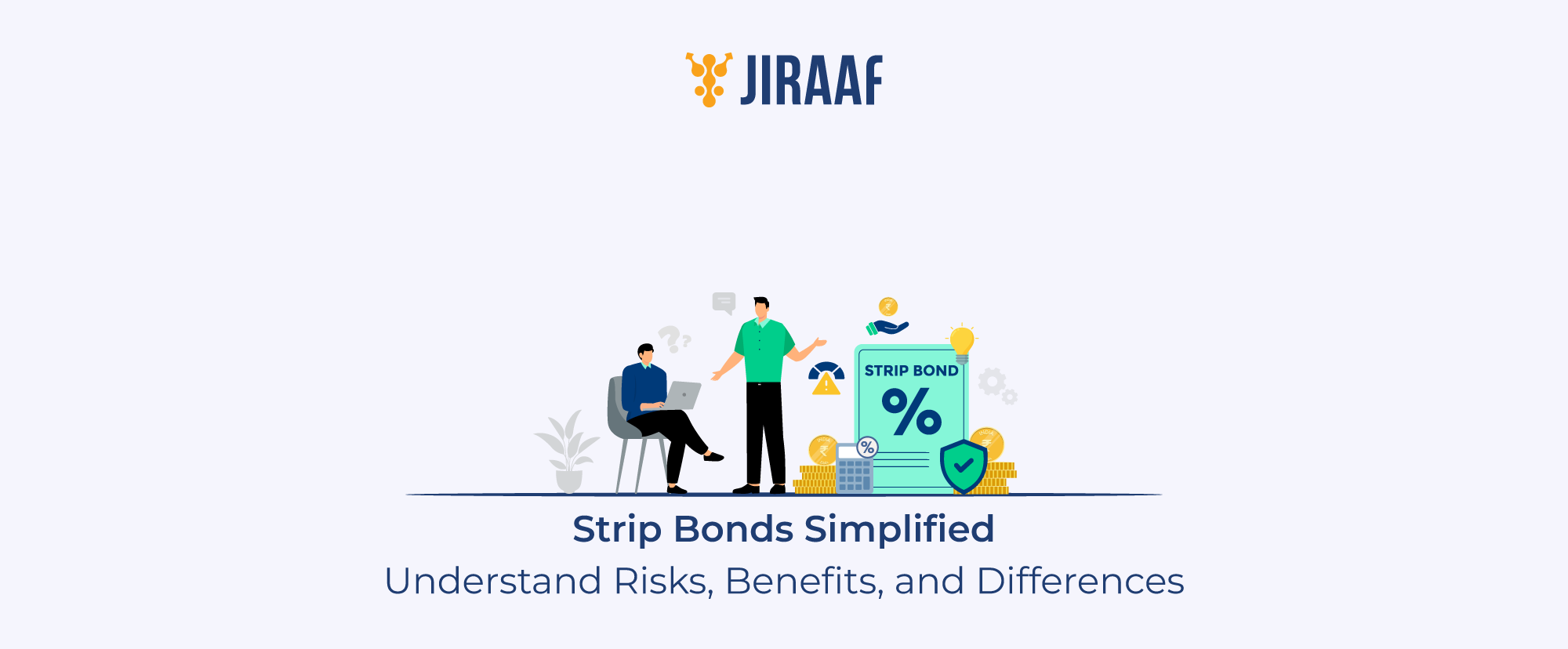Government securities (G-Secs) stand as one of the cornerstones of low-risk investments. With the backing of the government, these securities are designed to provide security, stability, and predictable returns, appealing to investors like you who prioritize risk management without sacrificing returns. G-Secs have seen rising demand from both institutional and retail investors who value their government backing and market versatility. This article will walk you through what government securities are, their role in the capital market, and why they might be a beneficial addition to your portfolio.
What Are Government Securities?
Government securities, or G-Secs, are debt instruments issued by the government to fund various projects and manage the country’s fiscal deficit. When you invest in a G-Sec, you are lending money to the government in return for periodic interest payments, along with the return of your principal amount upon maturity. G-Secs provide investors with a predictable, low-risk return.
How Do Government Securities Work?
G-Secs function similarly to other debt instruments but with an added layer of security due to government backing. The government offers these securities in various formats short-term and long-term, fixed and floating interest rates to suit different investor needs. You purchase these securities, either at par or a discount, hold them until maturity, or trade them in the secondary market.
Types of Government Securities
- Treasury Bills (T-bills): Short-term t-bills with maturities ranging from 91 to 364 days, offering quick returns with low risk
- Treasury Notes (T-notes): Intermediate-term securities with maturities from 1 to 10 years, providing a balance between short-term stability and yield
- Treasury Bonds (T-bonds): Long-term securities with a 10–30-year maturity period, suited for investors looking for long-term income
- Savings Bonds: Designed for retail investors, offering fixed returns with certain tax exemptions
- Cash Management Bills (CMBs): Short-term securities, like T-bills but with flexible maturities, used to manage short-term cash needs
- State Development Loans: Issued by individual states, they carry a slightly higher yield than central government securities but still maintain relative security
- Zero-coupon Bonds: Bonds issued at a discount and redeemed at face value without periodic interest payments
- Capital Indexed Bonds: Designed to protect against inflation, with principal adjusted to the inflation rate
What are the Features of Government Securities?
Government securities have several defining features:
- Fixed or Floating Rates: Flexibility in interest payments allows investors to choose securities that align with income needs
- No Lock-In Period for Tradable G-Secs: Many G-Secs don’t have a strict lock-in period if traded in the secondary market, allowing investors more flexibility to exit early if needed
- Market Accessibility: Available to both retail and institutional investors, making them a versatile investment option
Understanding the Government Securities Market in India
India’s government securities market is dynamic and expanding, with participation from banks, mutual funds, insurance companies, and retail investors. The Reserve Bank of India (RBI) is the central authority for issuing and regulating G-Secs, ensuring a well-maintained and transparent market.
Factors that Influence Government Securities Market
The G-Secs market is influenced by various factors:
- Interest Rates Set by the RBI: The RBI controls key interest rates like the repo rate, which affects government bond yields. When the RBI raises rates, new bonds offer better returns, making older ones less appealing and lowering their prices. On the other hand, when the RBI lowers rates, government bonds look more attractive compared to other investments, increasing demand.
- Government’s Fiscal Position: If the government has a large budget deficit, it has to borrow more by issuing bonds, increasing their supply. When there are more bonds than buyers, yields may go up to attract investors. High debt levels can also make investors cautious, so they might want higher yields to offset potential risks.
- Global Economic Conditions: Global trends affect foreign interest in Indian bonds. If other countries, like the U.S., offer higher bond yields, foreign investors might shift their money there, reducing demand for Indian bonds. Currency changes also matter, if the rupee weakens, foreign investors earn less in their home currency, which can make Indian bonds less appealing.
Advantages of Investing in Government Securities
Investing in government securities offers distinct benefits:
- Security and Safety: With government backing, government securities are among the investments that offer relatively higher security
- Stable Returns: G-Secs provide steady interest income, ideal for conservative portfolios
- Liquidity: The tradable nature of G-Secs allows investors to exit their positions when needed
Who Should Invest in Government Securities?
G-Secs are ideal for investors who:
- Prioritize capital preservation over wealth creation
- Seek a low-risk component within a diversified portfolio
- Are looking for stable, long-term income options without the equity market volatility
Example of Government Securities
A typical example is a 10-year Treasury Bond with a fixed interest rate, where you receive bi-annual interest payments and principal repayment upon maturity. This can serve as a steady income source in a low-risk investment strategy.
What are the Tax Implications of Government Securities in India?
- Tax Benefits: Certain G-Secs are eligible for tax exemptions, making them attractive for tax planning.
- Capital Gains Tax: When selling G-Secs, capital gains taxes may apply depending on the holding period.
- Tax-free Status: Some G-Secs offer tax-free interest income, adding to their appeal as a tax-efficient investment.
Risks Involved in Government Securities
Although low-risk, G-Secs are not risk-free. Here are some risks they carry:
- Interest Rate Risk: When interest rates rise, existing G-Sec values may drop, affecting market prices
- Inflation Risk: High inflation can erode real returns, especially in fixed-rate securities
- Credit Risk: While rare, a government default would impact G-Secs, though they still carry less credit risk than most other assets available in the market
G-Secs Vs. Other Investment Options
| Investment Type | Comparison with Government Securities (G-Secs) |
| Corporate Bonds | Corporate bonds can offer higher returns but come with greater credit risk compared to the stability of G-Secs. |
| Equities | Equities are prone to market volatility, whereas G-Secs provide a stable, lower-risk investment. |
| Mutual Funds | Mutual funds offer diversification but are still exposed to market risk, unlike the relative safety of G-Secs. |
| Real Estate | Real estate investments are less liquid and less accessible than G-Secs, which can be easily bought or sold in the market. |
How to Buy Government Securities
You can invest in G-Secs by following the process below:
- Open a Demat Account: To hold G-Secs in electronic form, open a Demat account with a bank or a financial institution that offers this service
- Primary Market (Auctions): You can buy G-Secs directly from the government through primary auctions conducted by the Reserve Bank of India (RBI). These auctions are usually open to institutional investors, but retail investors can also participate via specific schemes
- Retail Direct Scheme: Retail investors can buy G-Secs directly through the RBI’s retail direct scheme. This platform allows investors to invest in government bonds online, offering a simple and direct way to buy them
- Secondary Market: If you want to buy G-Secs after initial issuance, you can do so in the secondary market. These securities are traded on exchanges like the Bombay Stock Exchange (BSE) and National Stock Exchange (NSE), offering liquidity and flexibility in terms of buying and selling
- Broker/Bank Assistance: You can also approach brokers or banks to help you buy G-Secs either in the primary or secondary market, as they provide platforms and guidance for purchasing these bonds
Final Words about G-Secs
Government securities (G-secs), issued by the government, offer a reliable, low-risk investment choice, providing stability and predictable returns. While they may not deliver the high growth potential of equities or real estate, their security and consistency make them a sound addition to a diversified portfolio.
For risk-averse investors looking to safeguard their capital while generating steady income, G-Secs serve as a dependable foundation. By incorporating government securities into your portfolio, you can achieve a balanced investment approach that aligns with your financial goals for stability and peace of mind.
Discover fixed income investments with Jiraaf, a SEBI registered online bonds platform that educates and brings access to a wide array of bonds. Sign up today to explore diversified fixed income investment opportunities to support your goal-based wealth creation journey. Start investing!









